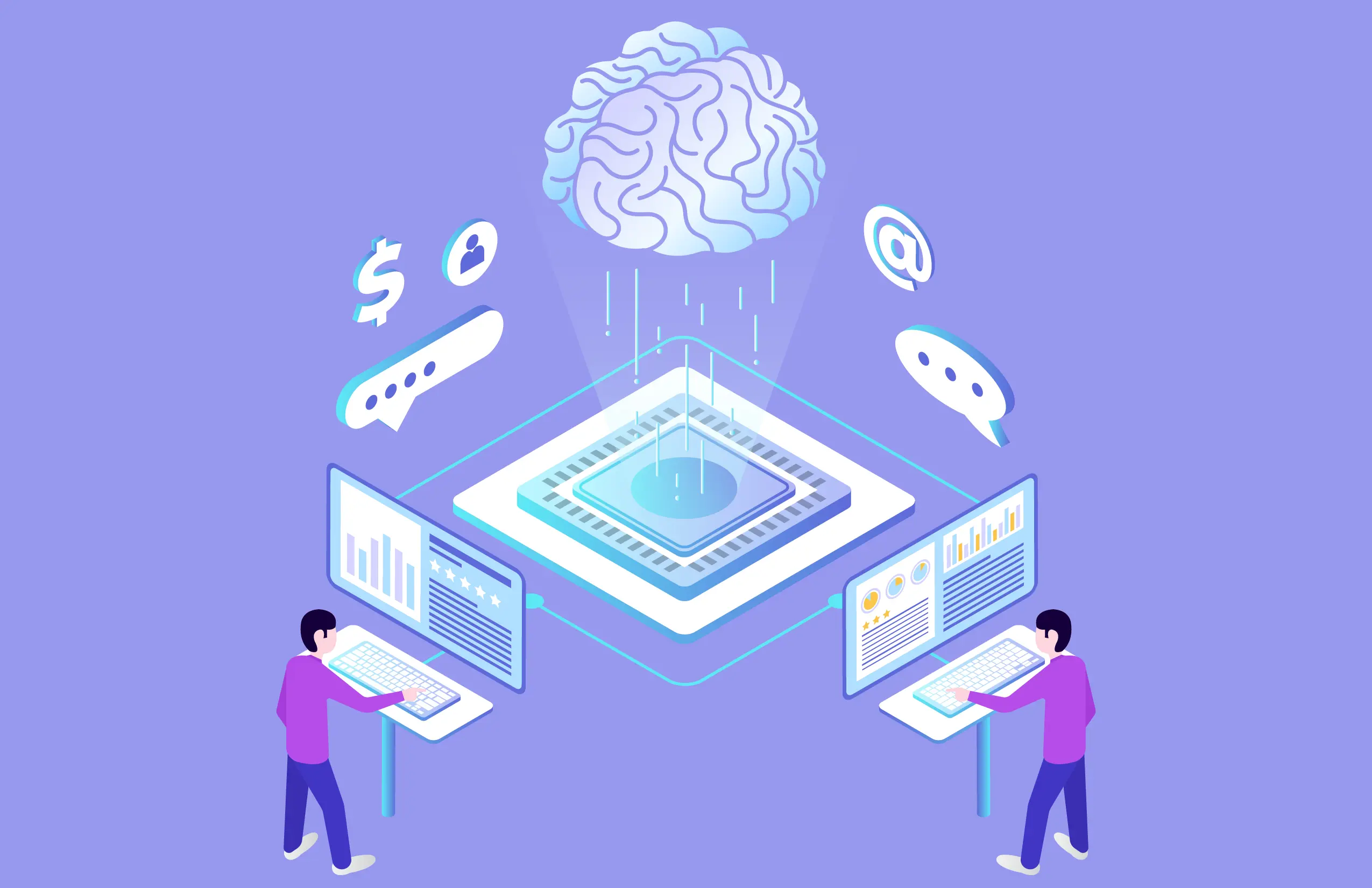
Mastering Sales Forecasting Using AI: A Marketer’s Essential Toolkit
November 29, 2023
Unlocking the Potential of Email Marketing for Lead Generation
December 1, 2023Unleashing the Power of Personalization
1. The Evolution of Marketing Strategies
Marketing, once a broad brushstroke painting aimed at capturing the attention of the masses, has undergone a metamorphosis into a finely tuned instrument. The evolution from mass marketing to targeted strategies represents a seismic shift in the industry. In the early days, marketers relied on sheer visibility to attract customers. Billboards, radio jingles, and television commercials were the weapons of choice. However, in a world inundated with information, this spray-and-pray approach lost its effectiveness.
Enter the era of targeted campaigns. As technology advanced, marketers began to harness data to understand their audience better. Demographics became a guiding light, allowing campaigns to be tailored to specific age groups, genders, and locations. Yet, even this level of targeting lacked the personal touch that resonates with individuals on a profound level.
2. Rise of Artificial Intelligence in Marketing
Artificial Intelligence (AI) emerges as the protagonist in the ongoing marketing saga. This technological marvel has not only disrupted traditional practices but has elevated personalization to unprecedented heights. AI brings to the table a dynamic ability to process colossal datasets at lightning speed. It goes beyond demographic segmentation, diving into the intricate details of consumer behavior, preferences, and even emotions.
The rise of AI in marketing is not just a trend; it’s a paradigm shift. Algorithms, driven by machine learning, analyze user interactions, discern patterns, and make real-time decisions. It’s the difference between shooting arrows in the dark and hitting the bullseye with a precision-guided missile. As the saying goes, “If content is king, then personalization is the crown.”

Understanding Personalized AI
Decoding the Algorithms
1. Machine Learning Algorithms at the Core
To comprehend the wizardry of personalized AI, one must first grasp the essence of machine learning algorithms. At its core, machine learning empowers systems to learn from data and adapt without explicit programming. It’s the difference between telling a computer what to do and allowing it to learn from experience.
In the realm of marketing, machine learning algorithms become the virtuoso musicians, playing a symphony of consumer insights. These algorithms analyze historical data, identifying patterns that human marketers might overlook. For instance, they can discern that users who purchase winter coats also tend to buy scarves, leading to personalized recommendations.
2. Neural Networks: The Brain Behind AI Personalization
Imagine AI as a virtual brain, and neural networks as its intricate neural pathways. Neural networks mimic the complexity of the human brain, with interconnected nodes processing information and making decisions. This complexity allows AI to understand context, recognize images, and even comprehend natural language.
Neural networks are the powerhouse behind personalized AI, enabling systems to interpret user preferences and behavior. They transform raw data into meaningful insights, creating a personalized experience akin to having a personal shopping assistant who understands your taste better than you do.
3. Deep Dive into Recommendation Engines
Within the AI arsenal, recommendation engines stand out as unsung heroes. These engines analyze user behavior and past interactions to predict what a user might want in the future. Think of it as a digital fortune-teller, but instead of reading palms, it reads clicks, searches, and purchases.
In e-commerce, recommendation engines suggest products based on a user’s browsing and purchasing history. Streaming services leverage these engines to curate playlists and recommend shows tailored to individual tastes. The result? A personalized experience that keeps users engaged and satisfied.
Real-Life Applications
1. E-commerce Personalization
The marriage of AI and e-commerce is a match made in marketing heaven. Picture this: you enter an online store, and instead of being bombarded with a myriad of options, the platform curates a selection tailored to your taste. AI algorithms analyze your past purchases, browsing history, and even items lingering in your shopping cart to present you with a personalized storefront.
Beyond recommendations, AI optimizes pricing strategies. Dynamic pricing, influenced by real-time demand and user behavior, ensures you see prices that resonate with your perceived value. It’s a dance of algorithms, orchestrating an experience that feels like a bespoke shopping journey.
2. Social Media Customization
Scrolling through your social media feed is no longer a random stroll through a digital landscape. AI algorithms analyze your interactions, likes, shares, and even the time you spend on specific content. Armed with this data, social media platforms deliver a curated feed that aligns with your interests.
In the realm of advertising, personalized AI ensures that the ads you see are not just relevant but tailored to your preferences. Whether it’s fashion, technology, or travel, AI ensures that your social media experience is a personalized showcase of what captures your attention.
3. Email Marketing Precision
The inbox, once a battleground of generic promotional emails, transforms into a curated space with the infusion of AI. Email marketing, powered by personalized AI, takes a quantum leap beyond simple segmentation. Instead of sending the same newsletter to everyone, AI dissects user behavior to tailor each email.
From subject lines to content, every element is a result of AI algorithms understanding what resonates with each individual. It’s like having a personal assistant who knows your likes, dislikes, and the type of content that prompts you to click ‘Read More.’ The result? Higher open rates, increased click-throughs, and a more engaged audience.

Crafting Tailored Experiences
Segmentation Strategies
1. Demographic Segmentation: Beyond the Basics
While demographic segmentation lays the foundation for personalized marketing, it’s no longer confined to age, gender, or location. Personalized AI delves deeper, recognizing that individuals within the same demographic category can have vastly different preferences.
For instance, consider two millennials with similar demographics. One might be a fitness enthusiast, while the other is a gaming aficionado. AI, armed with machine learning algorithms, distinguishes between these preferences, ensuring that marketing messages resonate on a personal level.
2. Behavioral Segmentation: Unraveling User Patterns
Behavioral segmentation takes personalization to the next level by analyzing how users interact with products, websites, and content. AI algorithms track every click, hover, and scroll, deciphering patterns that human analysts might overlook.
Let’s say you’re an online retailer. AI recognizes that a customer who frequently browses running shoes and activewear but rarely makes a purchase might be price-sensitive. Instead of bombarding them with generic promotions, the system can offer personalized discounts, turning a casual browser into a loyal customer.
3. Psychographic Segmentation: Understanding Consumer Personalities
Personalized AI doesn’t just stop at what you buy; it aims to understand who you are. Psychographic segmentation delves into personality traits, values, and interests. AI analyzes data from social media, surveys, and online behavior to create a holistic profile of the consumer.
Consider two individuals who both enjoy outdoor activities. While one is an adrenaline junkie seeking adventure, the other values tranquility and nature appreciation. Personalized AI ensures that marketing messages resonate with these distinct personalities, creating a connection that goes beyond product features.
4. Geographic Segmentation: Localized Appeal
Even geographic location becomes a personalized touchpoint in the era of AI. While traditional geographic segmentation may tailor marketing strategies based on broad regions, personalized AI drills down to the local level.
Imagine a restaurant chain with locations across the country. Instead of a generic national campaign, AI tailors promotions based on local preferences. If a particular region has a penchant for spicy cuisine, AI ensures that the marketing collateral reflects this, creating a localized appeal that resonates with the taste buds of the target audience.
Personalized Content Creation
1. Dynamic Content: A Game-Changer
Dynamic content represents a paradigm shift in how we consume information online. Rather than presenting a static webpage or email, dynamic content adapts in real-time based on user behavior. It’s like having a conversation with a website or email that understands your preferences and adjusts accordingly.
Consider a news website leveraging dynamic content. Instead of a generic homepage, AI curates content based on your past reading habits. If you’re a technology enthusiast, the homepage showcases the latest in gadgets and innovations. If you’re a sports fanatic, the headlines and articles shift to cater to your passion. It’s a personalized news experience that keeps you engaged and coming back for more.
2. Adaptive Landing Pages: A Seamless Journey
In the digital landscape, first impressions matter, and adaptive landing pages ensure that the initial interaction is tailored to perfection. These pages dynamically change layout, content, and calls-to-action based on the user’s behavior, creating a seamless journey that guides them toward conversion.
Let’s take the example of a travel website. If a user frequently searches for beach destinations, the adaptive landing page can showcase enticing beachfront locations, travel deals, and personalized recommendations. On the other hand, if the user leans towards mountain getaways, the page transforms to highlight scenic mountain retreats and adventure packages. It’s a personalized welcome mat that invites users deeper into the website’s offerings.
3. Tailoring Emails for Maximum Impact
Emails, once a generic flood of promotional content, transform into personalized narratives with the infusion of AI. Every element of an email, from the subject line to the body content and call-to-action, is meticulously crafted based on the recipient’s preferences.
Consider a fashion retailer using personalized AI in email marketing. If a customer frequently purchases dresses but rarely explores other categories, AI ensures that promotional emails showcase the latest dress collections, matching accessories, and personalized discounts. It’s not just an email; it’s a curated fashion experience delivered directly to the inbox.

The Data Dilemma: Balancing Personalization and Privacy
Ethical AI Practices
1. Transparency in Data Usage
In the age of personalized AI, trust is the currency that businesses must earn. Transparency in data usage becomes the cornerstone of ethical AI practices. Customers are more willing to share their data when they understand how it will be used and, more importantly, when they can trust that it will be used responsibly.
Brands adopting personalized AI must communicate openly about their data collection and utilization practices. This transparency builds a bridge of trust between the brand and the consumer. An effective way to achieve this is through clear and concise privacy policies, prominently displayed on websites and applications.
2. Consent and Privacy Compliance
Respecting user privacy is not just a legal obligation; it’s a fundamental aspect of ethical AI practices. Before diving into the ocean of customer data, businesses must obtain explicit consent. This consent should be informed, giving users a clear understanding of what data will be collected, how it will be used, and the benefits they can expect in return.
Moreover, compliance with privacy regulations is non-negotiable. GDPR, CCPA, and other data protection laws outline the rights of consumers and the responsibilities of businesses. Adhering to these regulations not only avoids legal repercussions but also showcases a commitment to ethical AI practices.
3. Striking the Right Balance
The quest for personalization must coexist with a commitment to privacy. Striking the right balance between providing tailored experiences and respecting user boundaries is the essence of ethical AI. Businesses must continuously reassess their practices, ensuring that personalization efforts never compromise user trust.
Imagine a scenario where a fitness app utilizes personalized AI to offer customized workout plans. While the app thrives on user data for personalization, it ensures that sensitive health information remains confidential. Striking this delicate balance not only enhances user trust but also sets the stage for sustainable and ethical AI practices.
Overcoming Data Challenges
1. Data Accuracy: The Cornerstone of Personalization
The success of personalized AI hinges on the accuracy of the underlying data. Inaccurate or outdated data leads to misguided personalization efforts, eroding user trust and diminishing the effectiveness of marketing campaigns.
To overcome this challenge, businesses must prioritize data accuracy. Regular data hygiene practices, such as cleaning and updating databases, are essential. AI algorithms can only perform their magic when fueled by reliable and precise data, ensuring that the personalized experiences they create are based on a foundation of accuracy.
2. Data Security Measures
As the custodians of vast amounts of sensitive information, businesses adopting personalized AI must fortify their defenses against cyber threats. Data breaches not only jeopardize user privacy but also erode trust in the brand.
Implementing robust data security measures is non-negotiable. Encryption, secure storage protocols, and regular security audits are essential components of a comprehensive data security strategy. By fortifying the walls that protect user data, businesses can instill confidence in their customers, assuring them that their information is in safe hands.
3. The Role of Customer Feedback in Refinement
Customers are not just recipients of personalized experiences; they are active participants in the refinement process. Gathering and leveraging customer feedback is a strategic approach to overcome data challenges. Users can provide insights into their preferences, helping businesses fine-tune their personalization algorithms.
Imagine an e-commerce platform that encourages customers to provide feedback on the relevance of product recommendations. This feedback loop serves as a valuable source of information for enhancing algorithms, ensuring that the personalization engine becomes increasingly adept at understanding and meeting customer expectations.

Personalization Metrics: Beyond Clicks and Conversions
Redefining Success
1. Engagement Metrics: Measuring Customer Interaction
In the realm of personalized AI, success extends beyond traditional metrics like clicks and conversions. Engagement metrics take center stage, providing insights into how customers interact with personalized content.
Consider a mobile app leveraging personalized AI to recommend content. Instead of solely measuring downloads or purchases, engagement metrics delve into how users explore the app, the time spent on specific features, and the depth of interaction. Metrics like time on page, interactions per session, and feature engagement paint a more nuanced picture of customer engagement.
2. Customer Lifetime Value (CLV)
Personalized AI contributes not just to immediate transactions but also to the long-term value of a customer. Customer Lifetime Value (CLV) becomes a pivotal metric in measuring the holistic impact of personalization efforts.
CLV takes into account the entire customer journey, from the initial interaction to repeat purchases and brand loyalty. Imagine an online subscription service using personalized AI to recommend new content based on user preferences. The resulting increase in customer loyalty and prolonged subscription tenure directly influences CLV, reflecting the enduring value that personalization brings to the business.
3. The Power of Customer Retention
In a world where customer loyalty is the holy grail, personalized AI emerges as the secret sauce for retention. Beyond attracting new customers, businesses must focus on retaining the ones they already have.
Imagine an e-commerce platform using AI to analyze customer preferences and purchase history. Instead of bombarding users with generic promotions, the platform tailors offers based on individual tastes, increasing the likelihood of repeat purchases. Metrics like customer retention rate, churn rate, and repeat purchase frequency become the guiding lights in evaluating the success of personalized AI. The goal shifts from a one-time transaction to fostering a lasting relationship with customers.
AI-Driven Analytics
1. Predictive Analytics: Anticipating Customer Needs
Predictive analytics, powered by AI, transcends historical data analysis. It becomes a crystal ball that foretells customer needs before they even express them. Picture an online marketplace utilizing predictive analytics to forecast the next trend in consumer preferences.
By analyzing past behaviors and market trends, AI predicts the products that are likely to resonate with customers in the future. This foresight empowers businesses to stay ahead of the curve, ensuring that their offerings align seamlessly with evolving consumer desires. Predictive analytics transforms marketing from reactive to proactive, creating a strategic advantage in a competitive landscape.
2. Sentiment Analysis: Understanding Customer Emotions
In the world of personalized AI, understanding not just what customers do but how they feel becomes a crucial dimension. Sentiment analysis, a facet of AI-driven analytics, deciphers customer emotions by analyzing text, reviews, and social media interactions.
Imagine a brand launching a new product. Sentiment analysis scours online conversations to gauge customer reactions. If the sentiment is positive, the marketing team can amplify the positive feedback in campaigns. If negative, the brand can swiftly address concerns and refine its approach. Sentiment analysis becomes the compass guiding marketing strategies in the ever-shifting sea of customer emotions.
3. Measuring Personalization Impact
The impact of personalized AI extends beyond immediate metrics; it leaves an indelible mark on brand perception and customer loyalty. Measuring this impact requires a holistic approach that considers not only transactional data but also the intangible aspects of customer experience.
Imagine an online streaming service using AI to curate playlists based on user preferences. Measuring the impact involves assessing not just the number of songs played but also user satisfaction, app ratings, and social media sentiment. The comprehensive evaluation of the personalization impact encompasses both quantitative and qualitative dimensions, providing a nuanced understanding of how AI shapes the customer experience.
Challenges and Solutions
Overcoming Implementation Hurdles
1. Integration Challenges: Bridging the Gap
The integration of personalized AI into existing marketing ecosystems presents a formidable challenge. Legacy systems, siloed data, and disparate technologies often hinder the seamless implementation of AI-driven personalization.
To overcome integration challenges, businesses must invest in interoperable technologies and robust APIs. Imagine a scenario where an e-commerce platform seamlessly integrates AI algorithms into its existing customer relationship management (CRM) system. This integration ensures that AI-driven insights seamlessly flow into the broader marketing strategy, creating a unified and cohesive approach to personalization.
2. Training Teams for AI Adoption
While AI is the engine powering personalized marketing, the human element remains indispensable. Training marketing teams to leverage AI effectively is a critical step in overcoming implementation hurdles.
Consider a marketing team transitioning to AI-driven content creation. Training programs can empower content creators to collaborate with AI tools, enhancing their creativity and efficiency. A harmonious collaboration between human ingenuity and AI capabilities unlocks the full potential of personalized marketing, ensuring that teams are not just users but orchestrators of AI-driven strategies.
3. Overcoming Resistance to Change
The introduction of personalized AI disrupts established workflows and routines. Resistance to change, a common human response, poses a significant hurdle in the adoption of AI-driven marketing strategies.
To overcome resistance, businesses must foster a culture of adaptability and innovation. Communication becomes the linchpin; stakeholders need to understand not just the ‘what’ and ‘how’ but also the ‘why’ of AI adoption. Imagine a company-wide campaign that demystifies AI, showcasing its benefits and demystifying misconceptions. By addressing concerns and highlighting the positive impact, businesses can pave the way for a smoother transition to AI-driven personalization.
Adapting to Dynamic Consumer Behavior
1. Changing Consumer Preferences
Consumer preferences are not static; they evolve with time and external influences. Adapting personalized AI to dynamic consumer behavior requires agility and a continuous pulse on market trends.
Consider a fashion retailer using AI to personalize product recommendations. As fashion trends shift, AI algorithms dynamically adjust, ensuring that recommendations align with current styles. The ability to adapt to changing preferences positions businesses not just as trend followers but as trendsetters in their respective industries.
2. Staying Ahead of Trends
In the fast-paced world of marketing, staying ahead of trends is synonymous with staying ahead of the competition. Personalized AI becomes the compass that guides businesses through the ever-changing landscape of consumer behavior and preferences.
Imagine an electronics brand leveraging AI to predict upcoming tech trends. By analyzing market signals and consumer behaviors, the brand can position itself as an early adopter, unveiling products that anticipate rather than react to market shifts. Staying ahead of trends with personalized AI is not just a strategic advantage; it becomes a hallmark of innovation and foresight.
3. Flexibility in Personalization Strategies
Rigid personalization strategies can quickly become obsolete in the face of dynamic consumer behavior. Flexibility becomes the hallmark of successful personalized AI implementation.
Consider an online marketplace adapting its personalization strategies during seasonal shifts. During the holiday season, AI might emphasize gift recommendations and festive promotions. As seasons change, the focus shifts seamlessly to accommodate new trends and consumer priorities. This flexibility ensures that personalized AI remains relevant and resonant, regardless of the ever-changing landscape of consumer behavior.
Future Horizons: Personalized AI on the Horizon
Advancements in AI Technology
1. AI-Powered Voice Assistants
The future of personalized AI unfolds with advancements in voice technology. AI-powered voice assistants, equipped with natural language processing and understanding capabilities, redefine the way consumers interact with brands.
Imagine a scenario where users engage with an e-commerce platform using voice commands. AI not only understands the spoken language but also interprets nuances and preferences, creating a conversational shopping experience. The integration of AI-powered voice assistants heralds a new era of personalized interactions, where the digital realm mirrors the ease and fluidity of human conversation.
2. Augmented Reality (AR) in Personalization
The marriage of personalized AI and Augmented Reality (AR) creates immersive experiences that transcend traditional boundaries. Imagine trying on clothes virtually, with AI-powered algorithms suggesting styles based on your preferences and body type.
AR in personalization goes beyond visualizing products; it transforms the way users engage with brands. From virtual try-ons to interactive product demonstrations, personalized AI enriches the customer experience in ways previously unimaginable. The future of marketing becomes not just personalized but a curated journey through augmented realms.
3. Personalized AI in Traditional Marketing Channels
The evolution of personalized AI extends beyond digital realms into traditional marketing channels. Imagine receiving a personalized catalog in the mail, curated specifically for your tastes and preferences, all thanks to AI-driven insights.
Traditional channels, from print to television, embrace personalized AI to deliver tailored messages to diverse audiences. AI algorithms analyze consumer data to inform content creation, ensuring that even mass media resonates on a personal level. The future blurs the lines between digital and traditional, creating a seamless tapestry of personalized experiences.
The Intersection of AI and Human Touch
1. Striking a Balance: AI as an Assistant, Not a Replacement
As AI evolves, the delicate balance between automation and the human touch becomes a focal point. AI serves as an assistant, enhancing human capabilities rather than replacing them.
Imagine a scenario where customer support utilizes AI to streamline routine queries, allowing human agents to focus on complex and empathetic interactions. Striking this balance ensures that AI amplifies human potential, creating a harmonious synergy where technology and humanity complement each other.
2. Leveraging AI for Enhanced Human Connection
The future of personalized AI transcends transactional interactions to foster genuine connections. AI becomes a conduit for understanding and responding to human emotions, creating experiences that resonate on an emotional level.
Consider an AI-driven chatbot that not only answers queries but detects user sentiments and adapts its responses accordingly. By leveraging AI for enhanced human connection, businesses elevate customer experiences from mere transactions to meaningful engagements. The future envisions a landscape where personalized AI becomes a catalyst for building lasting emotional connections between brands and consumers.
Conclusion
In the grand tapestry of marketing, personalized AI emerges as the masterstroke that intricately weaves brands into the fabric of individual lives. From the algorithms that decipher patterns to the real-life applications shaping consumer experiences, the impact is profound and transformative. Challenges are met with innovative solutions, and the horizon unfolds with the promise of AI advancements that blur the lines between digital and traditional realms.
As businesses navigate the dynamic landscape of personalized AI, the key lies not just in the technology but in the delicate dance between innovation and ethical considerations. The future beckons with the harmonious intersection of AI and the human touch, where technology becomes a conduit for deeper connections rather than a mere facilitator of transactions.


